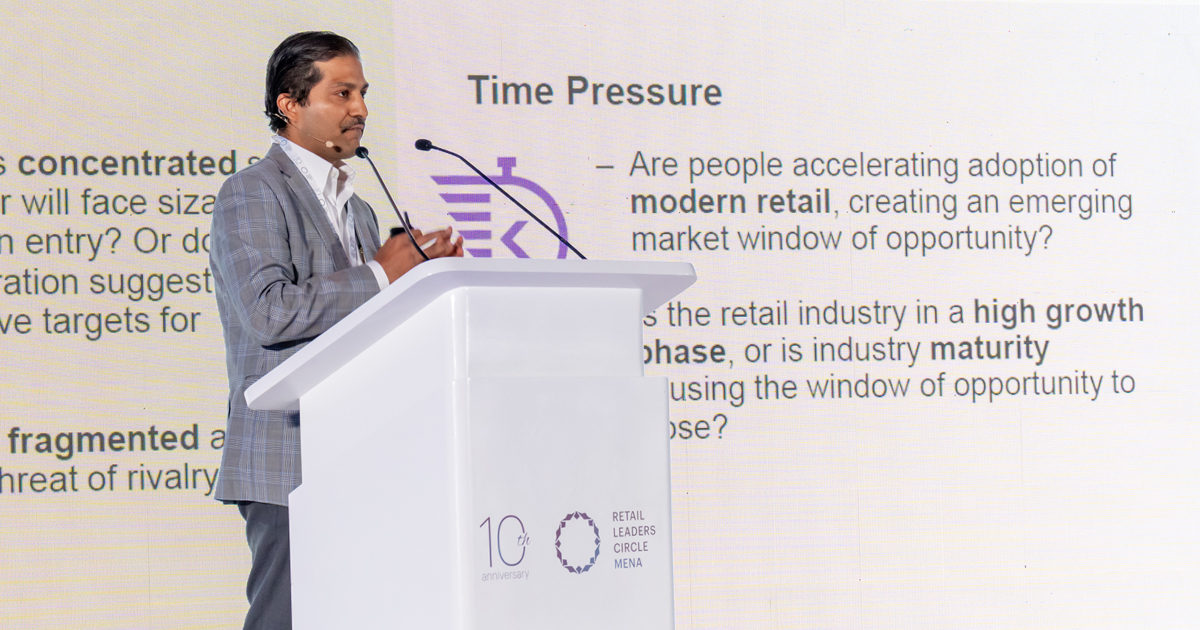The 2024 Global Retail Development Index (GRDI) highlights the pivotal shifts and emerging trends in the global retail sector, with a special focus on Saudi Arabia’s remarkable ascent as a leading retail hotspot.
Debashish Mukherjee, Partner, Middle East & Africa Lead, Consumer & Retail, Kearney, outlined the core components of the GRDI and the overarching trends that are shaping retail investment priorities.
GRDI methodology is anchored in four critical dimensions: market attractiveness, country risk, market saturation, and time pressure. These pillars collectively provide a robust framework for assessing the optimal timing for retail investments. Market attractiveness is evaluated based on income levels, growth, and distribution, while country risk encompasses political, financial, and economic uncertainties. Market saturation examines retail concentration and demand fragmentation, and time pressure assesses the market’s developmental phase, guiding investment urgency.
Saudi Arabia’s ascension to the third position globally underscores its growing retail market. This leap is attributed to several factors, including significant retail sales growth, a surge in foreign direct investment, and a flourishing modern retail sector. The kingdom’s strategic focus on diversifying its economy, coupled with infrastructural and regulatory enhancements, has fostered a conducive environment for retail investments.
The GRDI unveils universal trends that underscore the evolving retail landscape:
The fusion of digital and physical retail strategies is paramount for engaging today’s consumers. Adopting a digital-first mindset enhances competitiveness and caters to the increasing consumer preference for seamless shopping experiences.
In markets like Saudi Arabia, streamlined payment solutions and BNPL services offer a competitive edge by facilitating easy and inclusive access to products and services. Immersive and social commerce are gaining traction, significantly influencing consumer purchase decisions. Augmented reality (AR) experiences and social media platforms are pivotal in driving retail innovation.
Quick Commerce – Rapid delivery services are poised for growth, promising profitability even in emerging markets through efficient supply chain management and localized offerings. The development of locally relevant products and brands at strategic price points is crucial for catering to consumer needs amidst inflationary pressures.
To sustain and enhance its retail market position, Saudi Arabia and global investors must focus on:
Real Estate Diversification: Exploring beyond traditional mall-centric retail spaces to include community-focused and suburban retail environments.
Labor Flexibility: Modernizing labor regulations to accommodate part-time contracts and flexible working arrangements, elevating retail employment status.
Ecommerce Level Playing Field: Ensuring equitable competition between local and international e-commerce players through regulatory adjustments.
Local Brand Development: Encouraging the creation of local brands that resonate with domestic consumers and have the potential for global recognition.
Tier III Cities Engagement: Expanding retail initiatives to include smaller cities, recognizing their growth potential and consumer demand.
Digital and Data Integration: Leveraging technology to streamline retail operations, enhance customer experiences, and personalize offerings.
Saudi Arabia’s emergence as a retail powerhouse exemplifies the potential for markets to evolve through focused development efforts, setting a benchmark for retail excellence on the global stage.
 Adopting a digital first mindset is still required in many more leaps and bounds to be much more successful in this new era. That’s what the whole survey and the consumer insights are saying.
Adopting a digital first mindset is still required in many more leaps and bounds to be much more successful in this new era. That’s what the whole survey and the consumer insights are saying. 





